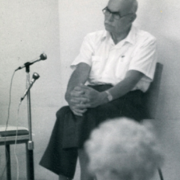Preface, Truth and evolution in “O” in Bion’s work
It was not easy to give an order, or even a sequence, to the thematic contributions of so many authors, from a variety of places and cultures (England, Brazil, France, Israel, Italy), approaching Bion’s thinking in an effort to share the idea that psychoanalysis, as a “psychodynamic probe”, can continuously explore that which is happening while it is happening and produce new dimensions of meaning. More than a sequence, whether historical or thematic, we had in mind rather a simultaneous presentation in various dimensions. This is why we decided to open the issue (which is to be followed by a second) with an article focusing on Bion’s idea of the emotional turbulence created by the encounter between two or more Read more


